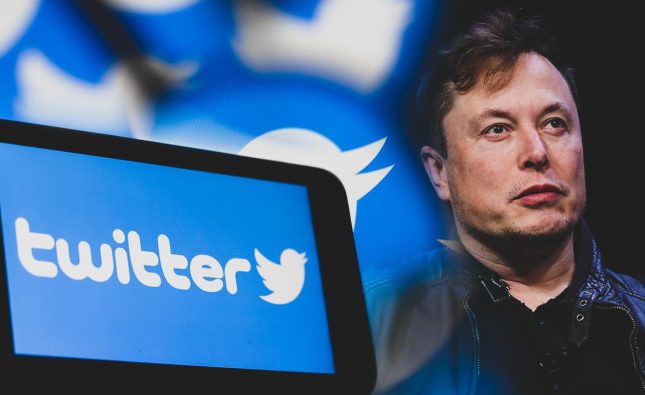
Welcome to the future of telecom! The world is rapidly changing and with it, our need for faster and more reliable networks. This is where 5G comes in – the next generation of wireless technology that promises lightning-fast speeds, lower latency, and a host of other benefits. But what exactly is 5G? And how will it change the way we communicate and connect with each other? In this blog post, we’ll explore everything you need to know about 5G and beyond as we look ahead to the future of telecom in 2023. Get ready to be amazed!
The Evolution of 5G
The evolution of 5G has been a long and winding road filled with technological breakthroughs, political wrangling, and intense competition among telecommunications companies. It all began in 2016 when the International Telecommunication Union (ITU) first defined the specifications for what would come to be known as 5G technology.
Since then, various wireless carriers around the world have invested billions of dollars in research and development to bring this cutting-edge telecom innovation to life. The first commercial 5G networks were launched in South Korea and the United States back in 2019.
One of the key drivers behind the evolution of 5G is its ability to accommodate an ever-growing number of connected devices. With more people using smartphones than ever before, it’s essential that our networks can handle the increased demand for data usage.
Another important feature of 5G is its low latency – meaning that there’s minimal delay between sending and receiving information over a network. This will enable faster response times for applications like remote surgery or autonomous vehicles.
As we move forward into the future, we can expect even more rapid changes in telecom technology as new players enter the market and existing ones continue to innovate. One thing is for sure – with each passing year, our networks will only get faster and more reliable than ever before!
What is 5G?
5G, the fifth generation of mobile networks, is the latest evolution in wireless communication technology. It promises faster internet speeds, lower latency and more reliable connectivity than its predecessors.
Unlike previous generations that focused mainly on voice calls and SMS texts, 5G is designed to support a wide range of applications including virtual reality, autonomous vehicles, remote surgeries and smart cities. The technology operates on a different frequency spectrum than 4G LTE and can transmit data at much higher frequencies using smaller wavelengths.
To achieve these high speeds and low latencies, 5G requires advanced infrastructure such as small cell towers located closer to users for better coverage. In addition to this improved connectivity experience for consumers, businesses also stand to benefit from increased productivity with faster data transfer rates.
Although still in its early stages of deployment worldwide due to challenges such as cost and regulatory issues, 5G has the potential to revolutionize how we interact with our devices and each other.
What are the benefits of 5G?
5G is the next generation of wireless technology that promises to bring a host of benefits compared to its predecessors. One of the most significant advantages is speed, with 5G capable of delivering data transfer rates up to ten times faster than 4G LTE.
Another key benefit of 5G is lower latency, which means that there will be less delay in transmitting and receiving data. This could improve the performance of time-sensitive applications such as autonomous vehicles and remote surgery.
Moreover, 5G can handle more devices per unit area, making it possible for businesses and other organizations to connect more machines and sensors in one location without experiencing network congestion.
In addition to these technical advantages, the increased bandwidth offered by 5G opens up new opportunities for innovative services such as virtual reality (VR) experiences or augmented reality (AR).
With greater reliability and security features built into its architecture, businesses can have peace-of-mind knowing that their networks are safe from cyber threats while enjoying lightning-fast speeds at an affordable cost.
These benefits make a compelling case for why companies should consider upgrading to 5G technology when it becomes available in their areas.
What are the challenges of 5G?
As with any new technology, the implementation of 5G comes with its fair share of challenges. One major obstacle is the cost involved in upgrading infrastructure to support 5G networks. Telecom companies will need to invest heavily in new equipment and update existing towers and cell sites to handle the increased speed and capacity.
Another challenge facing 5G is compatibility issues with existing devices. Many older smartphones and other devices may not be able to connect to a 5G network, meaning consumers would have to purchase newer models that are compatible.
Security concerns are also a top priority when it comes to implementing 5G networks. The increased number of connected devices creates more opportunities for cyberattacks, making it essential for telecom companies to prioritize security measures when designing their networks.
In addition, there are concerns about potential health effects from exposure to higher frequency radiation used by some types of 5G technologies. While research on this topic is ongoing, it’s important for telecom companies and regulators alike to consider these potential risks as they roll out new networks.
While there are certainly obstacles that must be overcome before widespread adoption can occur, the benefits offered by faster speeds and greater connectivity make pursuing advancements in telecommunications technology worthwhile.
How will 5G change the telecom landscape?
5G is set to revolutionize the telecom landscape in ways that we could never have imagined. With its lightning-fast speeds and ultra-low latency, it will enable new technologies such as self-driving cars, remote surgery, and virtual reality.
One of the biggest changes that 5G will bring about is an exponential increase in data transmission speeds. This means that video streaming, online gaming, and other data-intensive activities will be smoother than ever before. It also opens up possibilities for new services like augmented reality experiences and real-time translation apps.
Another significant impact of 5G on the telecom industry will be network architecture. Unlike previous generations of wireless technology which relied on centralized towers to transmit signals across long distances, 5G networks are designed to use smaller cells placed closer together. This means greater coverage in densely populated areas like cities.
The rise of IoT devices has been a major driver behind the development of 5G technology as well. With billions of connected devices expected by 2023, there needs to be a more efficient way for these devices to communicate with each other without causing network congestion or delays.
Security concerns around sharing sensitive information over wireless networks have always been present but with increased use cases like autonomous vehicles relying on low-latency communication between endpoints; security should remain paramount when building out future networks using this technology.
What’s next for telecom after 5G?
The 5G technology has already started transforming the telecom industry by providing faster internet speeds, low latency and higher bandwidth. But what’s next for telecom after 5G?
Firstly, it is important to note that even though the rollout of 5G is ongoing, researchers are already working on developing the next-generation wireless networks –6G. The development of 6G will focus more on creating a completely new network architecture rather than just improving upon previous generations.
Secondly, there will be an increase in demand for more advanced and sophisticated devices such as smart cars or robots that rely heavily on high-speed connectivity. Therefore, telecommunication companies will have to invest in equipping themselves with better infrastructure capable of handling these demands.
Thirdly, there will be a shift towards cloud-based networks which offer scalable resources to handle large amounts of data traffic without experiencing downtime issues.
Telecommunications companies must continue to improve their cybersecurity protocols as cyber threats become increasingly prevalent. This means investing in cutting-edge technologies like blockchain that can ensure secure communication systems.
While we cannot predict exactly what lies ahead for the telecom industry after 5G; we can expect continued innovation and improvement aimed at meeting consumer expectations for faster and more reliable connectivity.
Conclusion
The world of telecommunications is rapidly changing and evolving with the advent of 5G technology. With faster speeds, lower latency, and increased connectivity, 5G is poised to revolutionize the way we communicate and interact with each other. However, as with any new technology there are challenges that must be addressed in order for it to reach its full potential.
Despite these challenges, it’s clear that 5G will play a crucial role in shaping the telecom landscape in years to come. As we move closer towards a future where everything is connected through IoT devices and smart cities become more prevalent, reliable and fast connections will be even more important.
Looking beyond 5G, we can expect continued innovation in areas such as virtual reality (VR), augmented reality (AR), artificial intelligence (AI) and quantum computing. These advancements will likely bring about even more opportunities for growth within telecommunications.
It’s an exciting time for telecom as we continue to push boundaries and adapt to emerging technologies. It remains to be seen what exactly lies ahead but one thing is certain: The future looks bright for those who embrace change!










